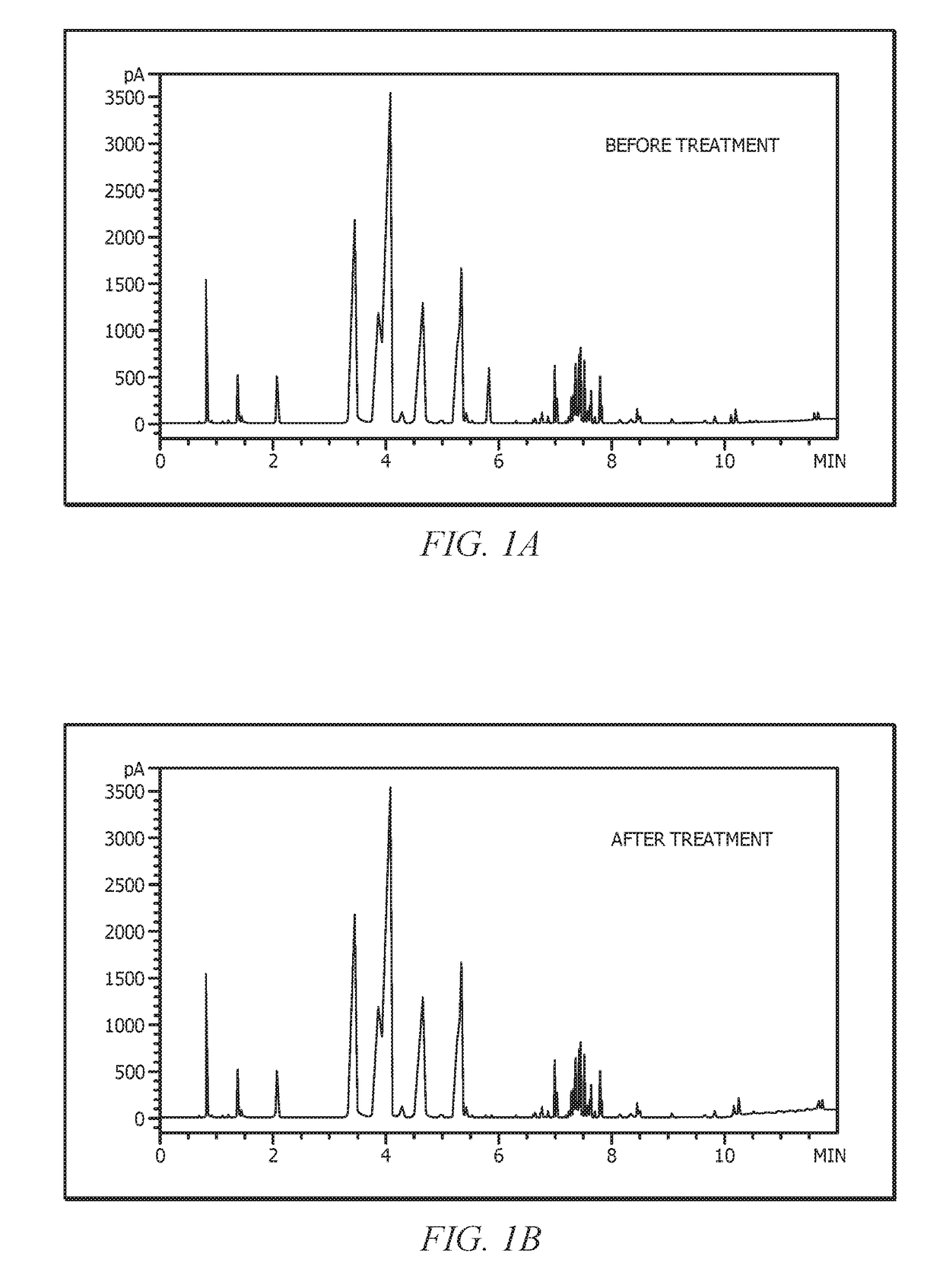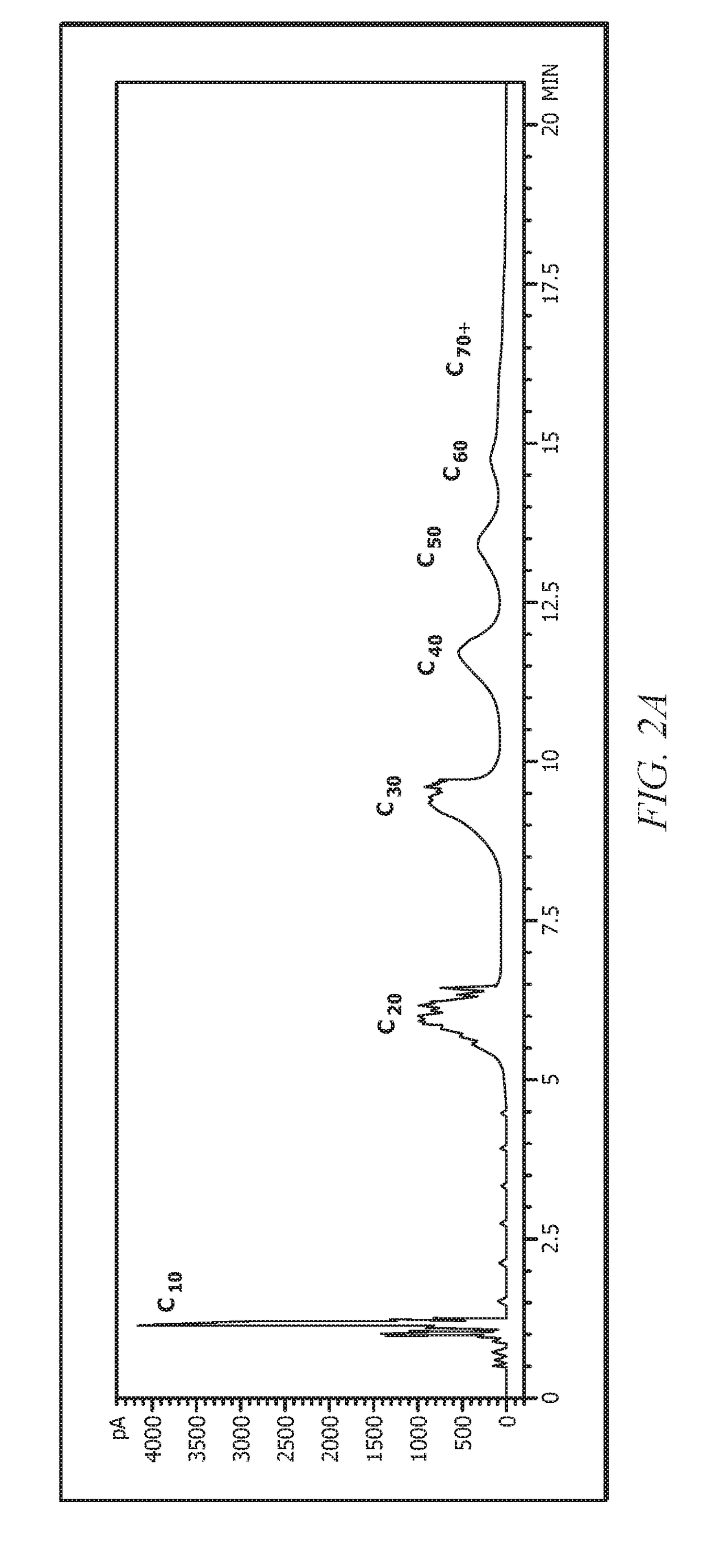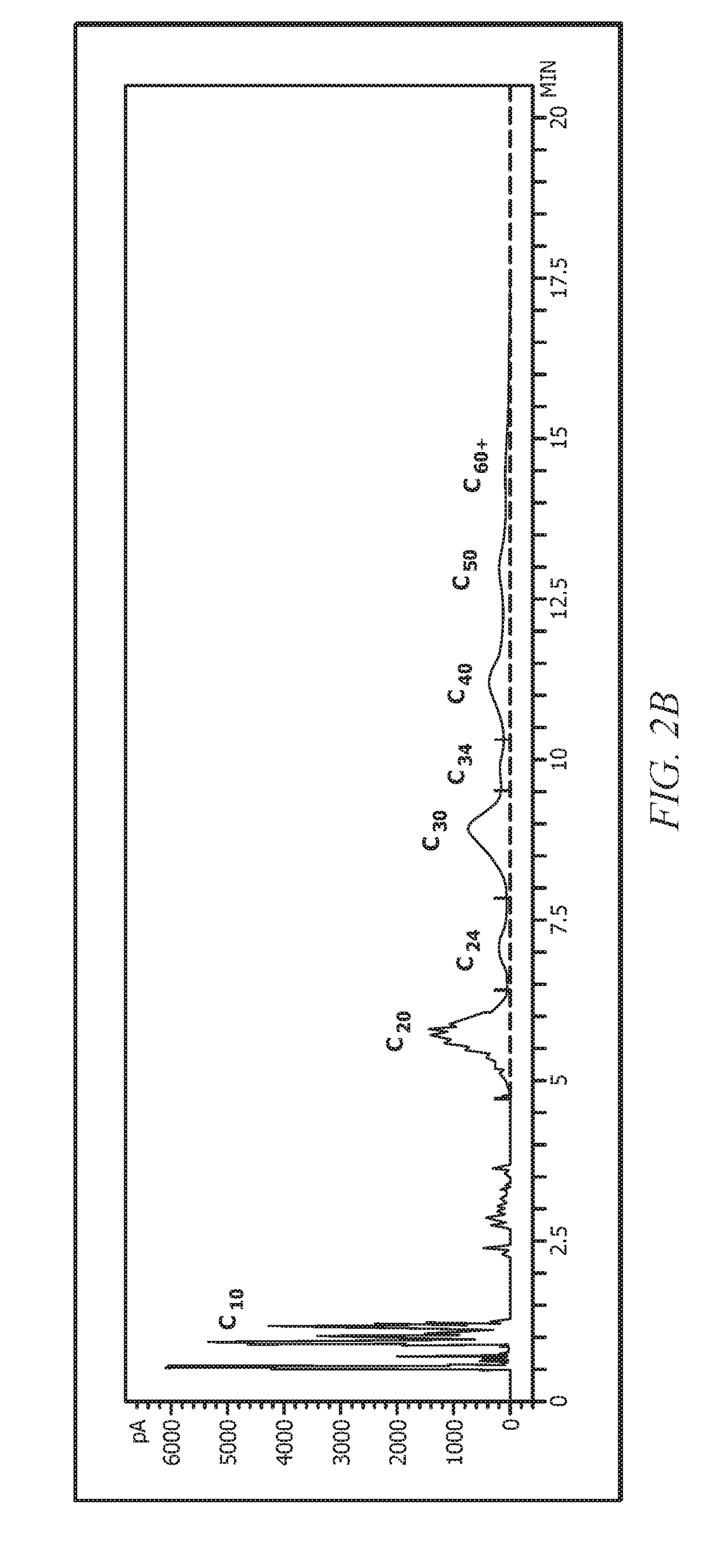Decene Oligomers
a technology of decene oligomers and oligomers, which is applied in the direction of organic chemistry, lubricant compositions, hydrocarbon preparation catalysts, etc., can solve the problems of constraints on the availability of linear alpha-olefin fractions typically utilized for these products
- Summary
- Abstract
- Description
- Claims
- Application Information
AI Technical Summary
Benefits of technology
Problems solved by technology
Method used
Image
Examples
example 1
[0197]The mixed olefin stream was contacted with silica gel (high purity, 60Å, 70-230 mesh obtained from Sigma Aldrich) and stirred overnight to remove polar compounds. The removal of polar compounds was monitored / observed visually as the mixed olefin stream was a slight yellow color and became colorless after stirring with silica, while the silica gel turned yellow. The silica gel was removed via filtration to provide treated mixed olefins. The treated mixed olefins were then stored over molecular sieves. The mixed olefin stream and the treated mixed olefins were analyzed on an Agilent 6890 gas chromatograph equipped with an Agilent 50 m×0.2 mm×0.5 μm (95 / 5% methyl / phenyl-polysiloxane) HP-5 column and a flame ionization detector. FIG. 1 provides a gas chromatographic analysis trace of the mixed olefin stream (1A) and the treated mixed olefin stream (1B). These gas chromatographic traces clearly show that the silica gel removed at least a component in the mixed olefin stream that ha...
example 2
[0198]In a nitrogen drybox, 5 g of AlBr3 was pulverized using a mortar and pestle. The pulverized AlBr3 was loaded into a scintillation vial containing a magnetic stir bar, a polytetrafluoroethylene (PTFE) cap, and placed on a stir plate. To the scintillation vial, isomerized decenes were slowly added over a period of 15 minutes with stirring. The addition of the isomerized decenes to the AlBr3 was monitored and controlled to avoid an increase in the temperature of the solution during the isomerized decenes addition. The AlBr3 / isomerized decenes catalyst solution was then removed from the drybox and set aside for later use in a mixed decenes oligomerization.
[0199]In a separatory funnel, 467 g of the treated mixed olefins and 20 g of deionized water were combined and shaken together. The layers were allowed to separate and the treated mixed olefins were then removed from the separatory funnel. The treated mixed olefins (now saturated with water) were then added to a 3-neck round bott...
example 4
[0204]In a nitrogen filled glove box, a 250 mL round bottom flask equipped with septa and a magnetic stir bar was charged with 100 mL of the treated mixed olefins. The flask was then placed on a hot plate and warmed to the 80° C. Once the flask had reached the desired starting temperature, 0.1 mL (11.8 mg) of isobutyl chloride was added via syringe to the round bottom flask. Ionic liquid, 1 mL, was added to the round bottom flask, with stirring, over a period of 5 minutes. Upon the addition of the ionic liquid, the contents of the round bottom flask rapidly increased in temperature to 50° C. The reaction was allowed to continue for 60 minutes after the addition of the ionic liquid was complete. Over the reaction time period, the reaction solution changed from colorless to a light orange and was sampled at 30 minutes and 60 minutes. At the end of the 60 minutes reaction time, the reaction was then quenched by titration with n-BuOH, with stirring, until the solution lost color and a w...
PUM
| Property | Measurement | Unit |
|---|---|---|
| mol % | aaaaa | aaaaa |
| mol % | aaaaa | aaaaa |
| mol % | aaaaa | aaaaa |
Abstract
Description
Claims
Application Information
 Login to View More
Login to View More - R&D
- Intellectual Property
- Life Sciences
- Materials
- Tech Scout
- Unparalleled Data Quality
- Higher Quality Content
- 60% Fewer Hallucinations
Browse by: Latest US Patents, China's latest patents, Technical Efficacy Thesaurus, Application Domain, Technology Topic, Popular Technical Reports.
© 2025 PatSnap. All rights reserved.Legal|Privacy policy|Modern Slavery Act Transparency Statement|Sitemap|About US| Contact US: help@patsnap.com



